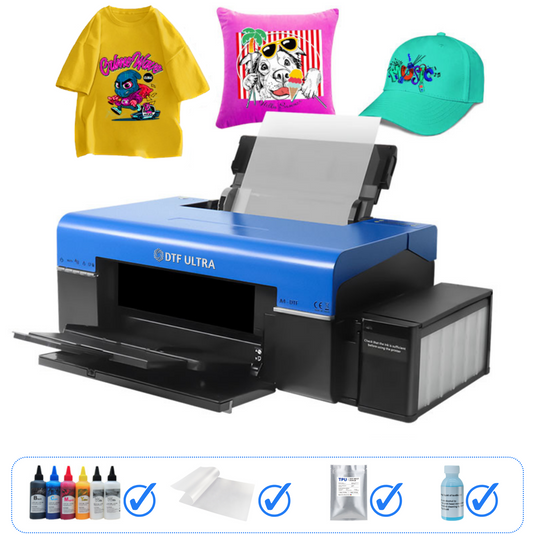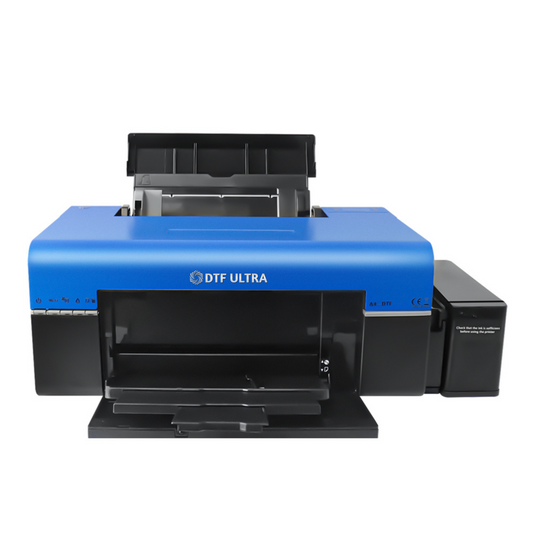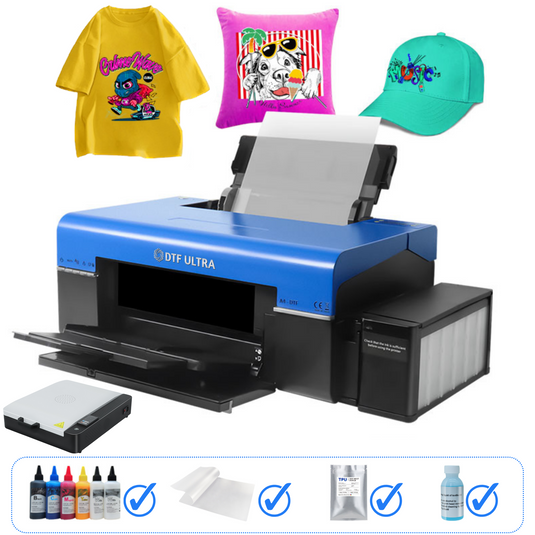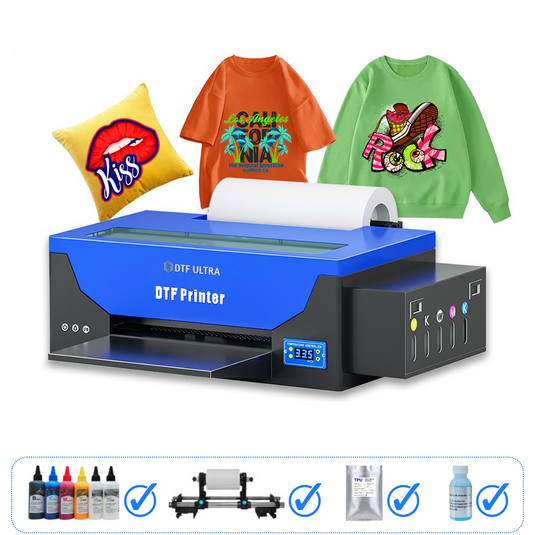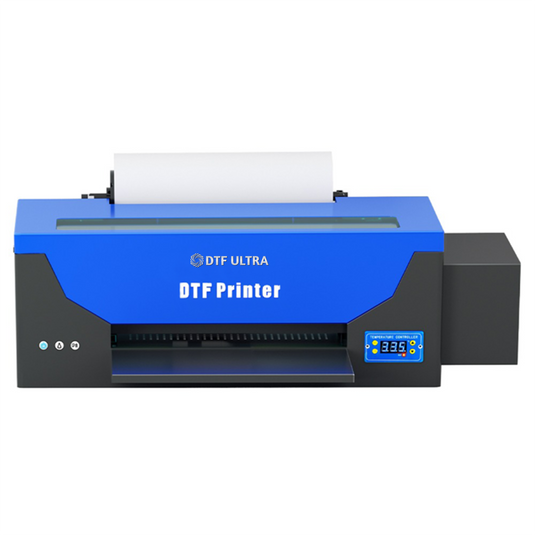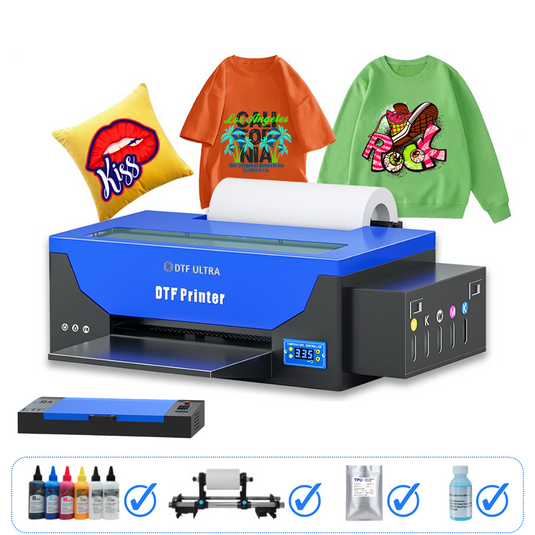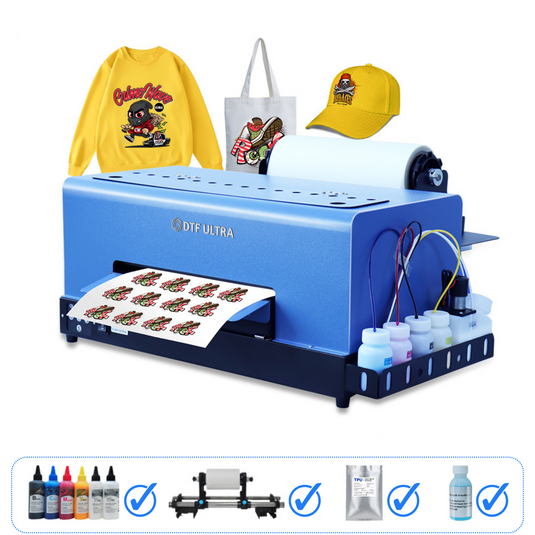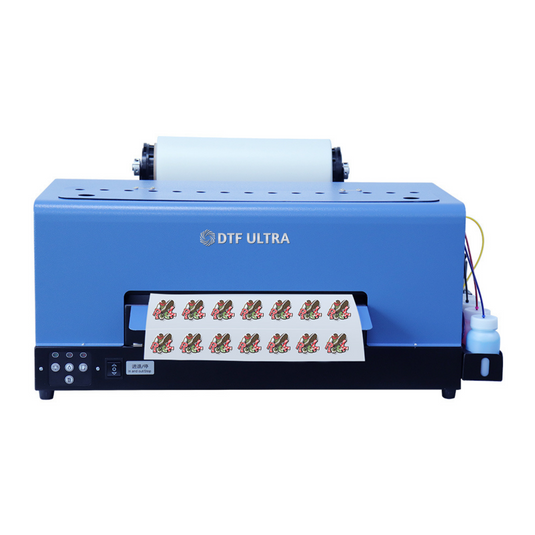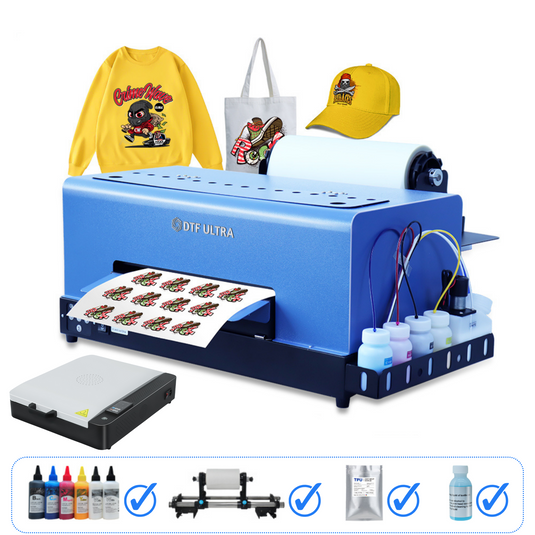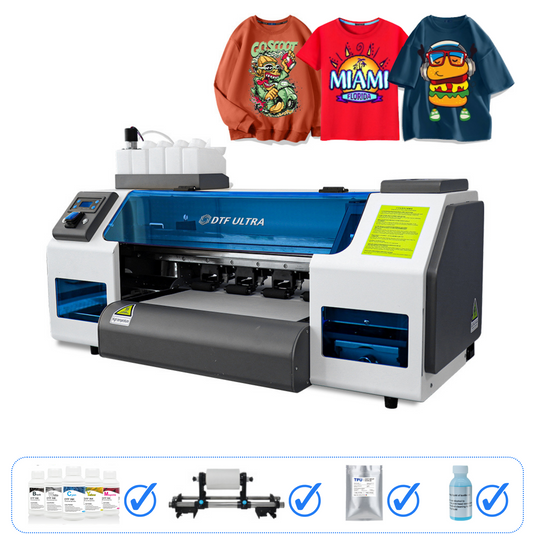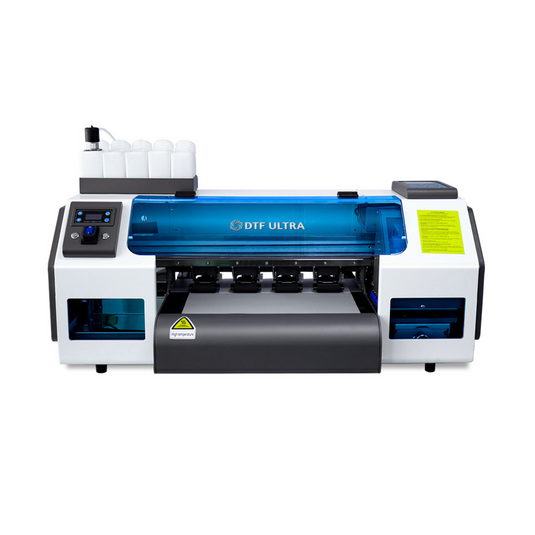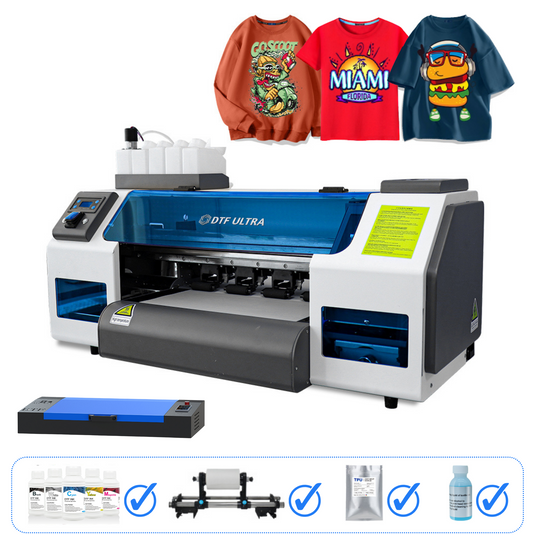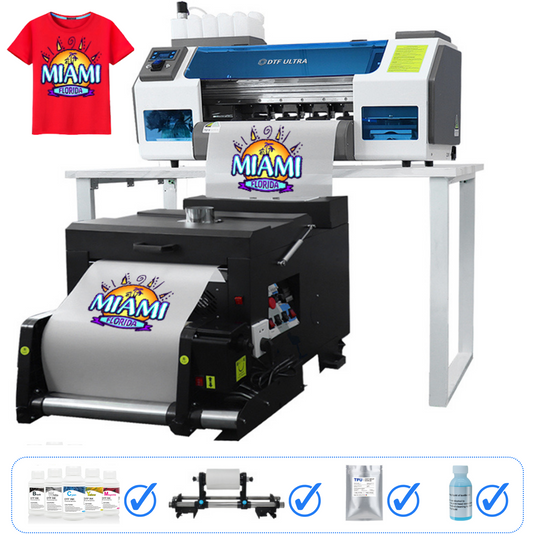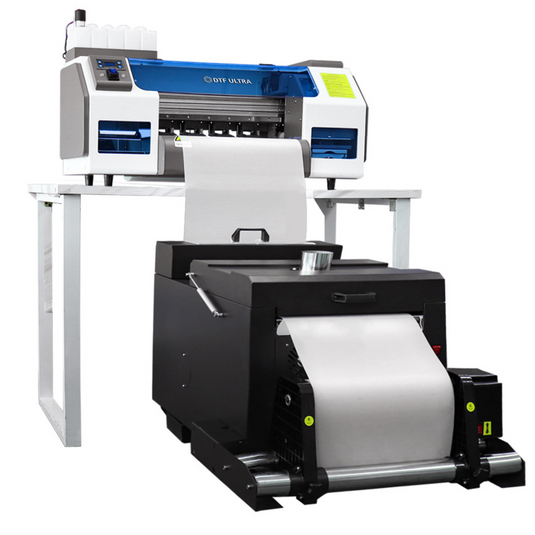DTF ULTRA Printers (Direct to Film)
Discover a new way to bring your creative vision to life by creating printed fabrics and textile merchandise for sale using DTF ULTRA’s Direct to Film (DTF) printers. Transform custom graphic designs into stunning, vibrant prints on various fabrics, including cotton, polyester, cotton-polyester blends, spandex, nylon, denim, and canvas. Simply transfer your design onto a PET film (also called DTF Film) and follow the steps described below — all at a low cost per print. At DTF ULTRA, we offer comprehensive bundles for sale, including DTF printers, consumables, and necessary accessories, so you’re all set to start printing.


FAQs
What garments can you print onto using a DTF printer?
Our DTF printers for sale allow you to print on a variety of fabrics, including cotton, polyester, cotton-polyester blends, spandex, nylon, denim, and canvas. You can apply designs to a wide range of items, such as shirts, sweatshirts, bags, socks, caps, shoes, and jeans.
Are DTF printers cheaper than DTG printers?
Direct to Film equipment, including printers and consumables, has lower costs than Direct to Garment equipment. This makes the cost-per-print lower, giving you a much more economical option.
Are there any disadvantages to DTF printers?
Our DTF printers for sale don’t come with any strong disadvantages that may put you off from purchasing. Some cons related to DTF technology include:
- The machines require regular maintenance.
- You need proper ventilation for the machine due to fumes.
As you can see, our Direct to Film transfer printers are safe for most people. Whether you’re running a business or want to use the machine for personal use, they will eventually give you an excellent return on investment.

